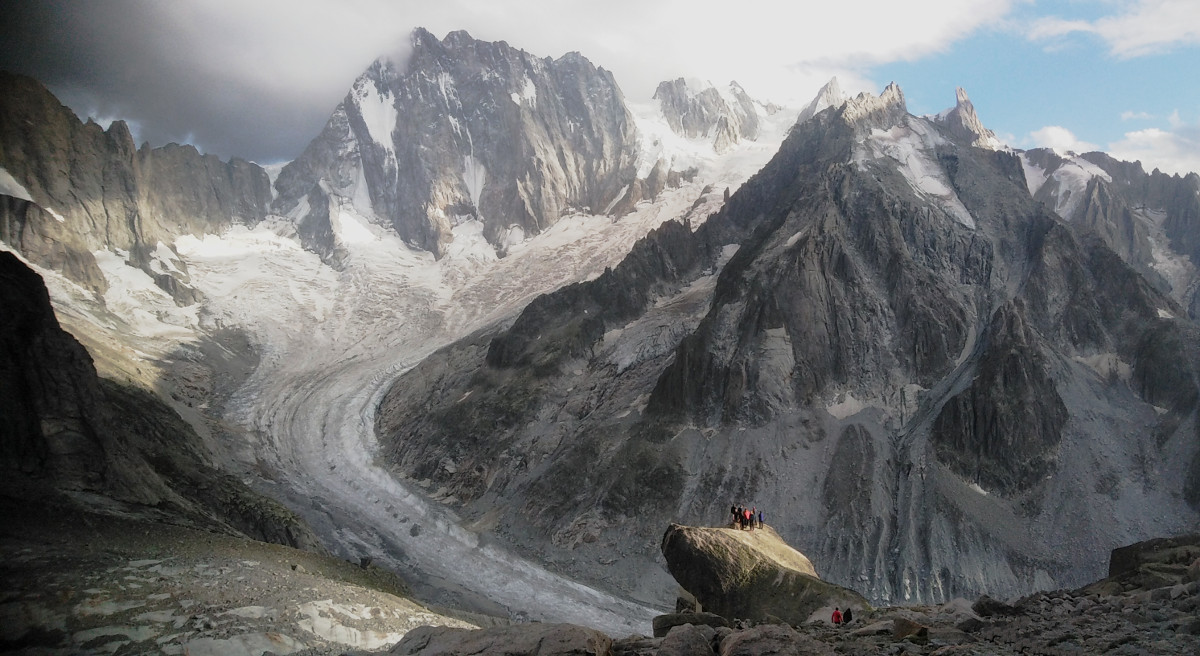This article is the first part of a miniseries, raising the subject of climbing, skitouring and other mountain sports analysis. We would use data provided by a website camptocamp.org (licensed CC-BY-SA). It is a serivce providing its users with all required information for choosing right peak or climb, such as height, all the gear you need, or how long would it take to accomplish. It also provides data from users, who post their ascents log. We will narrow down the analysis to the highest Alpine massif – Mont Blanc Massif – european mecca of mountain sports.
Alpine activities
Firstly, in order to analyse ascent data properly, we like to present what type of sport activities logs we have. It would allow us what type of users tend to post on camptocamp service.
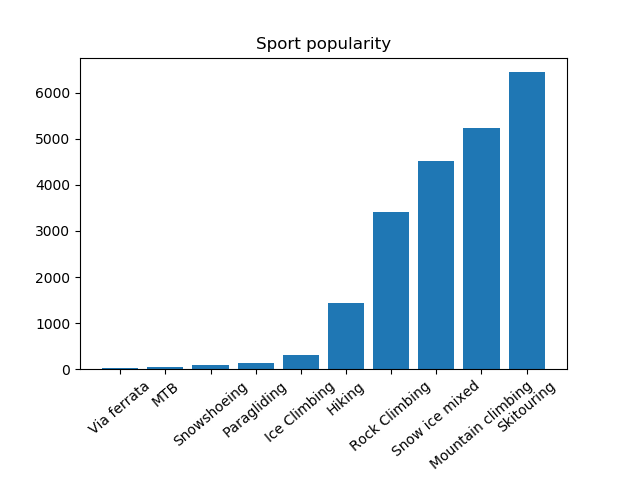
It corresponds with the purpose for which athletes tend to come to highest Alpine massif. There is seen a overrepresentation of climbing and skitoring over other mountain sport activities such as MTB. It is caused by other services people use to use, that are dedicated for one activity such as Strava. What is more, Camp to Camp is a website used by professional athletes. It could be seen in and advantage in Snow Ice Mixed comparing to hiking, which does not corresponds with real number of activities done in mountains.
High season by activity
Let’s analyse when is high season for climbing, hiking or skitouring, meaning the most people doing the same route as you.
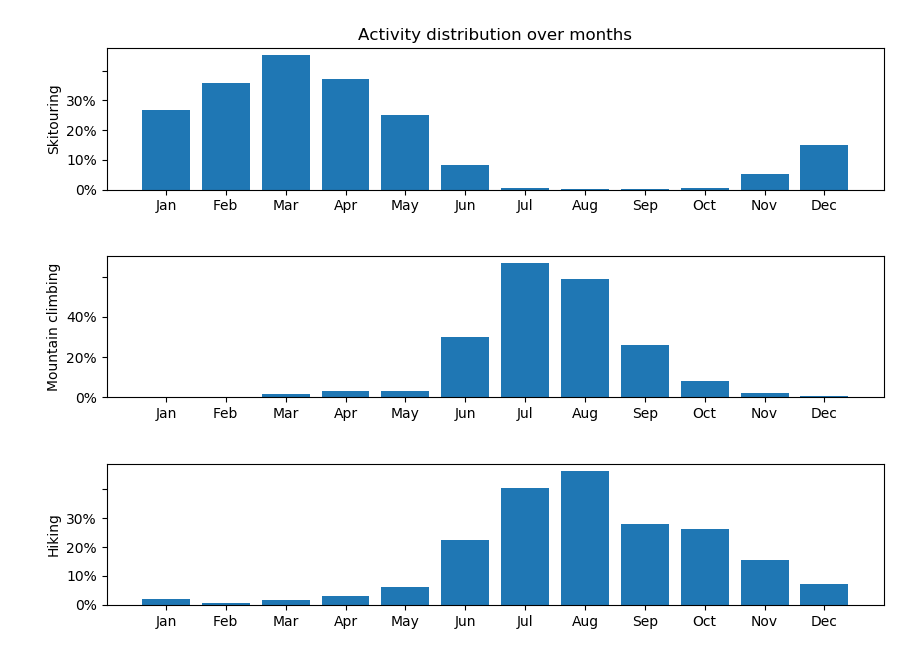
The highest season for skitouring in March and for climbing and trekking in July or August corresponds with actual number of tourists in such a place as Chamonix. We can chceck now, when is the highest season for athletes considering all sports.
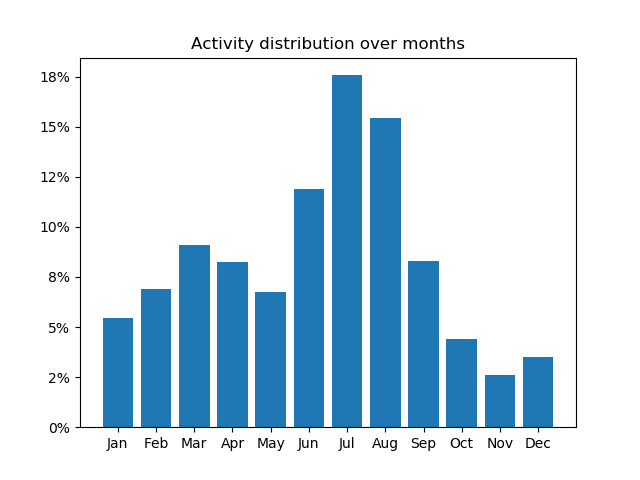
Giving us a peak in July. One can say it is summer is way more overcrowded that they say in a chart above. It could be caused by numerous people coming to Mont Blanc massif and being fresh to mountains who rarely do post their activities.
Combining activities
There is a trend to combine some mountain activities. Purpose could be to shorten the time needed to ascent and descent a peak or just plain fun. How do tendencies of combining activities look in Mont Blanc massif?
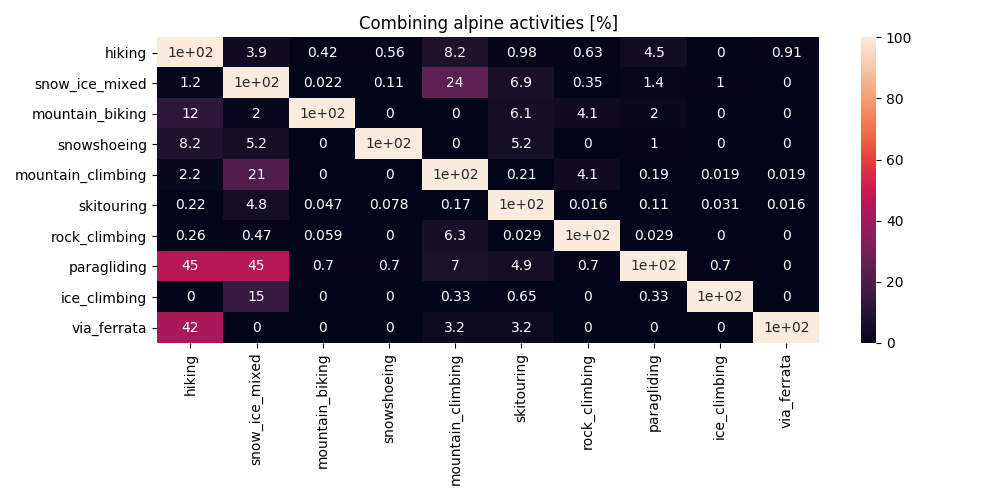
Table is meant to be read row→column, so for the combination of hiking and paragliding we obtain: 45% paraglider flights are combined with hiking, 4.5% of hikes are followed by a paraglider flight.
Let us think which sports are worth mixing them up.Because of the shorter time needed to paraglide down a peak comparing to ordinary rappel or hiking down, it is worth consider mixing paragliding with other climbing activities. The results need to be taken with caution though, e.g. we do not think that over 6% of bike rides are combined with skiing, but camptocamp is not meant for bikers…
Most popular routes
Next we would focus on types of routes, climbers like to post on Camp to Camp. Firstly it is known that ego wants to present only best and demanding achievements. On the other hand we have to remember Camp to Camp is a placed where more experienced climbers tend to post.
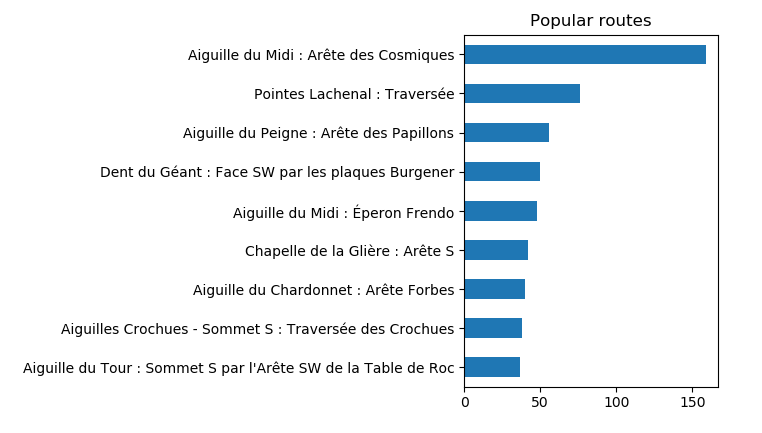
To confirm, on the chart above, showing most popular routes in massif, the fifth place is for Éperon Frendo, which is a complex route to be done only in very good conditions by an advanced team, which in fact implies not as many ascents as for instance Arete des Papillons – a easy, very crowded route.
Mountain activity by altitude
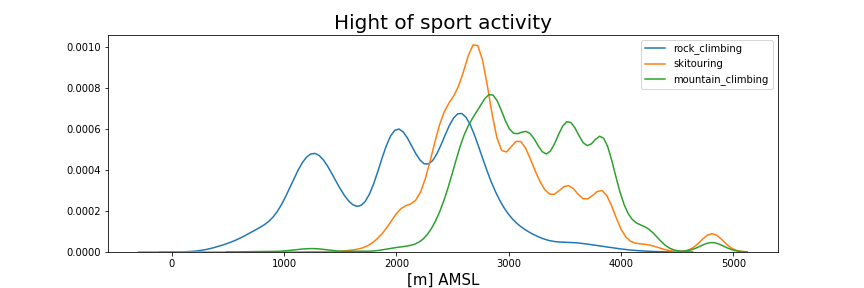
Chart presents distribution of skitouring, rock and mountain climbing over the altitude in meters. There is a visible distinction around 2700m AMSL where climbers tend to stop considering route as rock and start to give it “mountain” label. What is more, skitouring is mostly to be done at this distinction level.
It is not easy to put a straight distinction between rock climbing and mountain climbing. We will not try to convince anybody to our point of view, but we would analyse what the data says.
In the end all comes down to... weather
We could give you numerous examples of trends in athletes activities, but there is one factor that cannot be omitted. The factor that caused many arguments and plenty of wasted time. It is the weather forecast and following it actual weather. That is why we compared camp to camp data with archival forecast data. Let’s start with checking what temperature is the best to do sports in valley and what on highest peaks
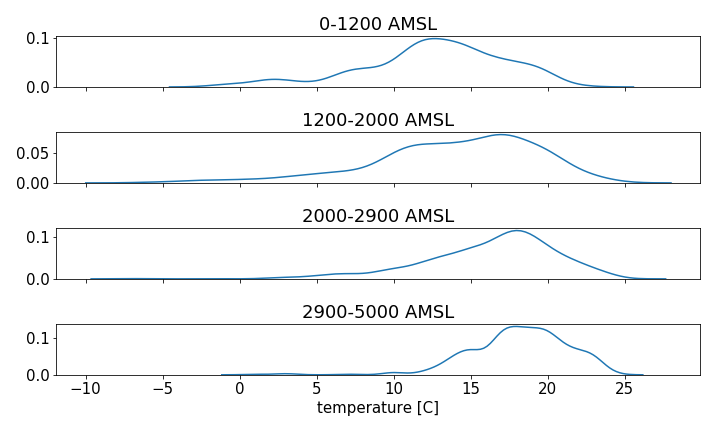
Interesting fact is, starting from 3000 m AMSL temperature became a crucial factor to plan a climb or hike.
Weather conditions for S/N face ascents
We can also check at what weather condition what route would be the most overcrowded. It is easy to say: when it is sunny! So lets check its relation with temperature and UV index.
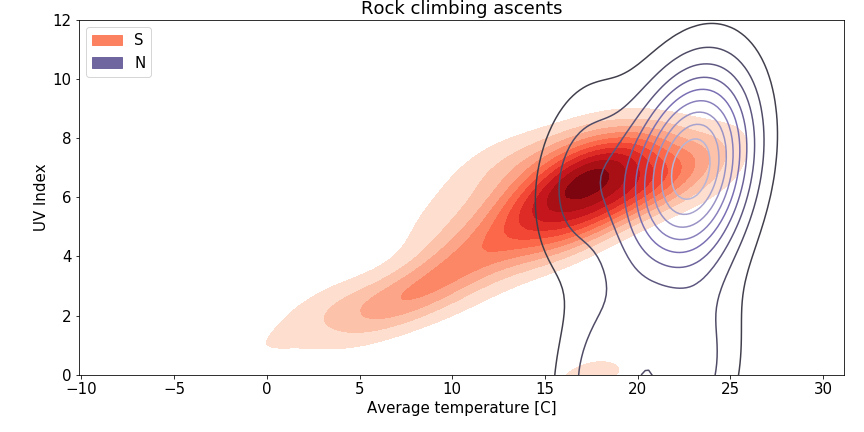
It presents us when mountain climbers try to reach peaks on south faces (red) and north faces (purple). We can see that south faces are universal place to climb - with a proper insolation it is possible to climb even on colder days. In comparison north faces require very specific conditions, most of all high temperature.
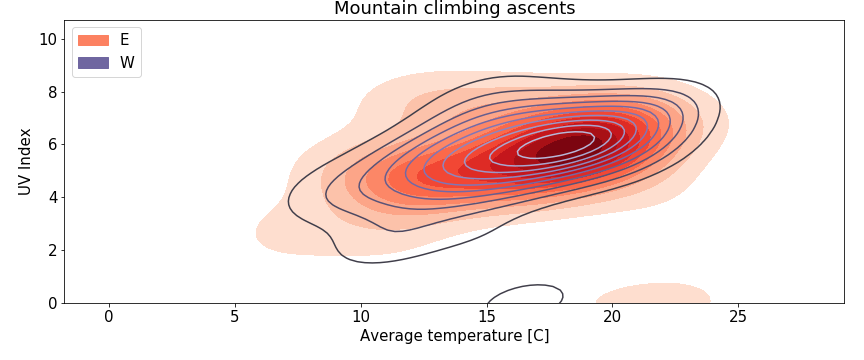
It gives no particular differences in weather to be chosen for east or west face ascents.
For comparison with rock climbing, skitouring activities on N and S faces seem to happen in quite similar conditions.
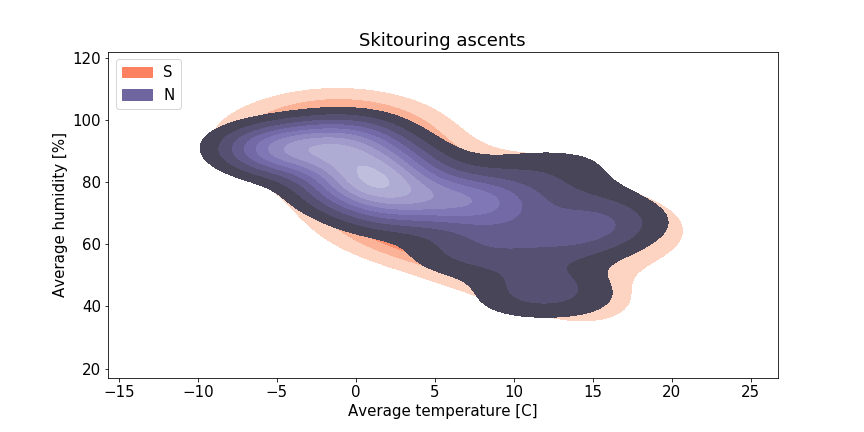
Summary
All given examples showed up from how many perspectives we could summarise mountain activities people post on internet, which in fact is only a tip of a iceberg. It is only a introduction to further and more complex analysis giving a prediction model.
© cc-by-sa: https://creativecommons.org/licenses/by-sa/3.0/deed.en
